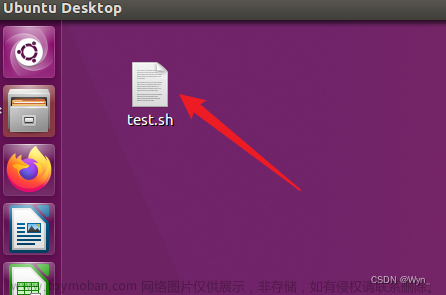在研究《管理Python虚拟环境的脚本》时,我们使用了source指令而没有使用sh或者bash来执行脚本,就是因为source指令可以让脚本在当前bash(sh)中执行;而sh或者bash则会新启动一个bash来执行。
我们可以通过下面这个脚本做测试
# test.sh
# 用一个数组保存进程ID和进程名
processInfo=()
# 查找父进程的进程号
findParentID() {
if [ $1 = $2 ]; then
# 如果父进程号等于目标进程号,说明已经找到了父进程
# 打印所有进程信息
echo "processInfo: ${processInfo[@]}"
return
else
# 获取当前进程的父进程号
parentID=$(ps -o ppid= $1)
# 获取父进程的名字
parentName=$(ps -o comm= $parentID)
# 将父进程号和父进程名保存到数组中
processInfo+=($parentID $parentName)
findParentID $parentID $2
fi
}
currentName=$(ps -o comm= $$)
processInfo+=($$ $currentName)
findParentID $$ $1
bash
bash test.sh $$
processInfo: 45322 bash 40883 bash
当前bash的进程ID是40883,新启动的bash的进程ID是45322。
source
source test.sh $$
processInfo: 40883 bash
可以见得没有启动新的bash程序。
source还可以让自动注册脚本中的函数。
比如上面指令让脚本中的findParentID方法可以直接被使用。
findParentID $$ $$
processInfo: 40883 bash
相似的应用在Python虚拟环境中也有体现。
比如我们启动一个虚拟环境,使用下面的命令
source .env/bin/activate

而退出虚拟环境的方法deactivate则注册在.env/bin/activate文件中文章来源:https://www.toymoban.com/news/detail-809744.html
# This file must be used with "source bin/activate" *from bash*
# you cannot run it directly
deactivate () {
# reset old environment variables
if [ -n "${_OLD_VIRTUAL_PATH:-}" ] ; then
PATH="${_OLD_VIRTUAL_PATH:-}"
export PATH
unset _OLD_VIRTUAL_PATH
fi
if [ -n "${_OLD_VIRTUAL_PYTHONHOME:-}" ] ; then
PYTHONHOME="${_OLD_VIRTUAL_PYTHONHOME:-}"
export PYTHONHOME
unset _OLD_VIRTUAL_PYTHONHOME
fi
# This should detect bash and zsh, which have a hash command that must
# be called to get it to forget past commands. Without forgetting
# past commands the $PATH changes we made may not be respected
if [ -n "${BASH:-}" -o -n "${ZSH_VERSION:-}" ] ; then
hash -r 2> /dev/null
fi
if [ -n "${_OLD_VIRTUAL_PS1:-}" ] ; then
PS1="${_OLD_VIRTUAL_PS1:-}"
export PS1
unset _OLD_VIRTUAL_PS1
fi
unset VIRTUAL_ENV
unset VIRTUAL_ENV_PROMPT
if [ ! "${1:-}" = "nondestructive" ] ; then
# Self destruct!
unset -f deactivate
fi
}
# unset irrelevant variables
deactivate nondestructive
VIRTUAL_ENV="/home/fangliang/numpy-example/.env"
export VIRTUAL_ENV
_OLD_VIRTUAL_PATH="$PATH"
PATH="$VIRTUAL_ENV/bin:$PATH"
export PATH
# unset PYTHONHOME if set
# this will fail if PYTHONHOME is set to the empty string (which is bad anyway)
# could use `if (set -u; : $PYTHONHOME) ;` in bash
if [ -n "${PYTHONHOME:-}" ] ; then
_OLD_VIRTUAL_PYTHONHOME="${PYTHONHOME:-}"
unset PYTHONHOME
fi
if [ -z "${VIRTUAL_ENV_DISABLE_PROMPT:-}" ] ; then
_OLD_VIRTUAL_PS1="${PS1:-}"
PS1="(.env) ${PS1:-}"
export PS1
VIRTUAL_ENV_PROMPT="(.env) "
export VIRTUAL_ENV_PROMPT
fi
# This should detect bash and zsh, which have a hash command that must
# be called to get it to forget past commands. Without forgetting
# past commands the $PATH changes we made may not be respected
if [ -n "${BASH:-}" -o -n "${ZSH_VERSION:-}" ] ; then
hash -r 2> /dev/null
fi
如果我们使用bash来执行,则因为虚拟环境会在新启动的bash中存在,并会快速退出。回到我们原来的bash中时,已经不是虚拟环境了。相应的deactivate方法也没注册到环境中。
所以如果我们希望脚本对当前bash有所影响,就要使用source去执行脚本;如果不希望影响当前bash,则可以使用bash或者sh去执行。
需要注意的是,bash并不等价于sh。sh(Bourne Shell)是1978年由史蒂夫·伯恩编写的shell;bash(Bourne-Again Shell)是1987年由布莱恩·福克斯为GNU计划编写的Unix shell。主要目标是与POSIX标准保持一致,同时兼顾对sh的兼容,是各种Linux发行版标准配置的Shell。比如上面test.sh使用bash可以正确执行,而sh执行就会报错。文章来源地址https://www.toymoban.com/news/detail-809744.html
到了这里,关于在当前bash(sh)中执行脚本和注册函数的文章就介绍完了。如果您还想了解更多内容,请在右上角搜索TOY模板网以前的文章或继续浏览下面的相关文章,希望大家以后多多支持TOY模板网!









